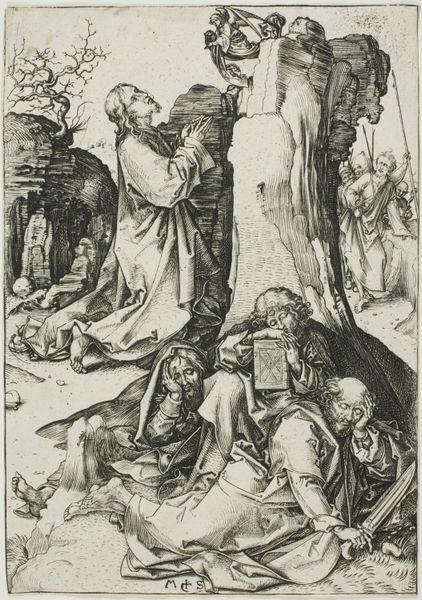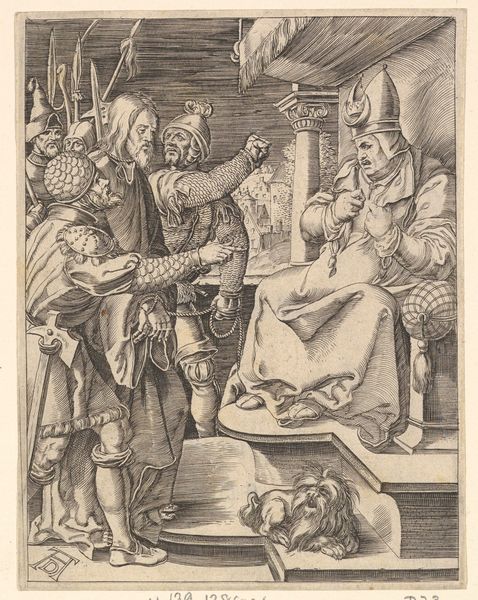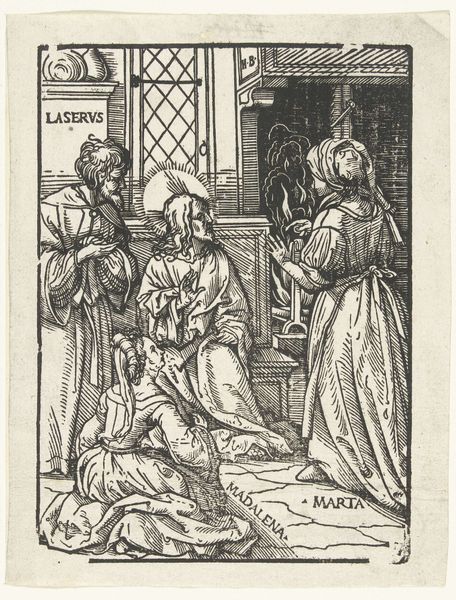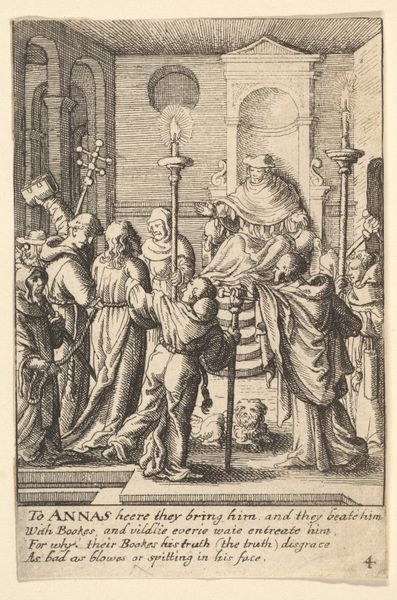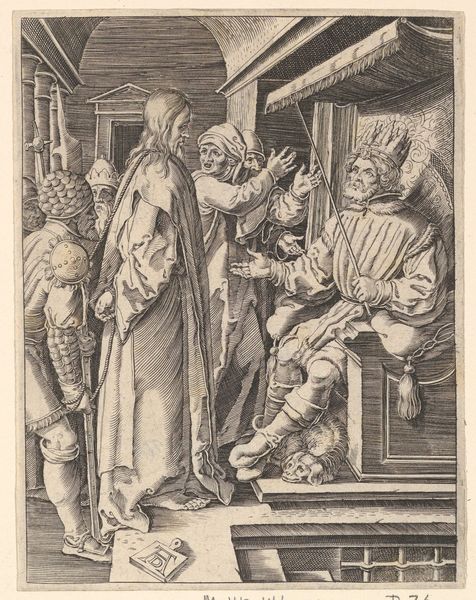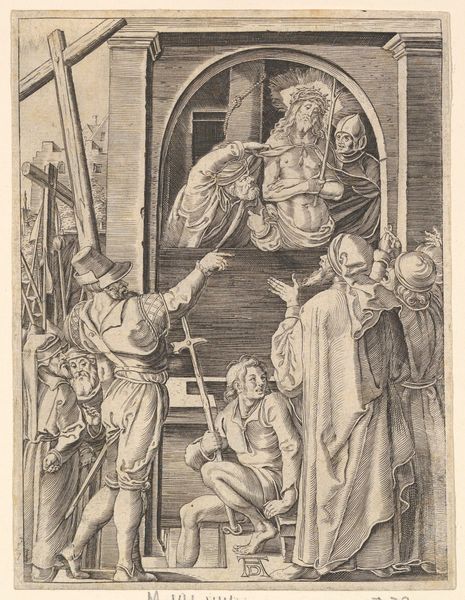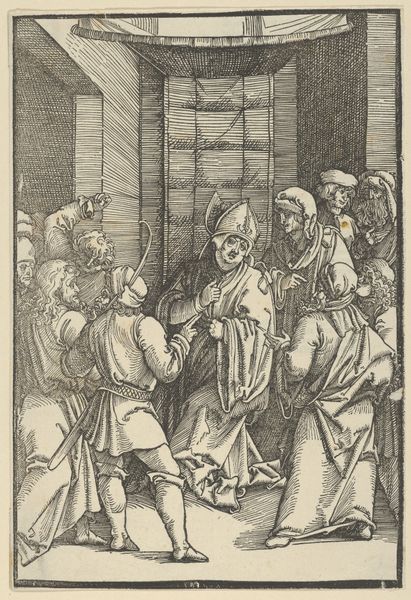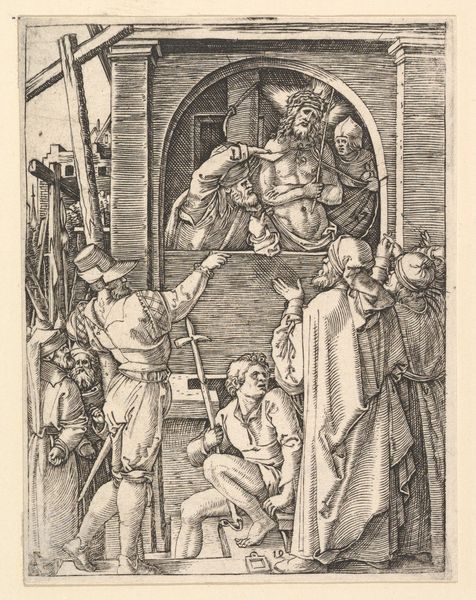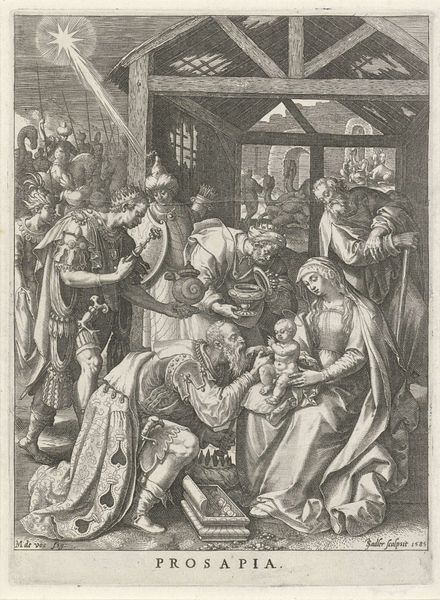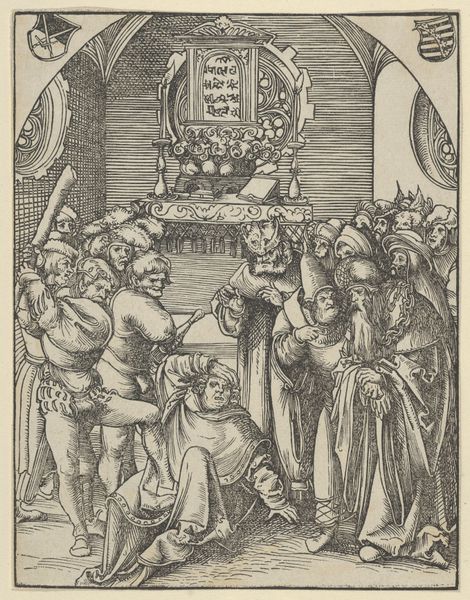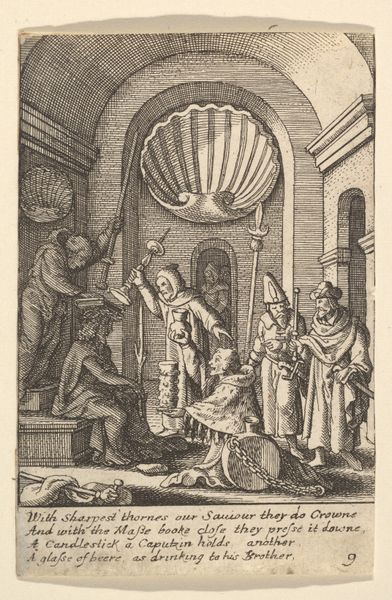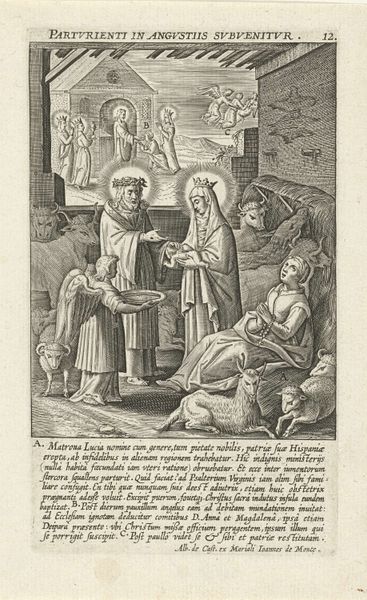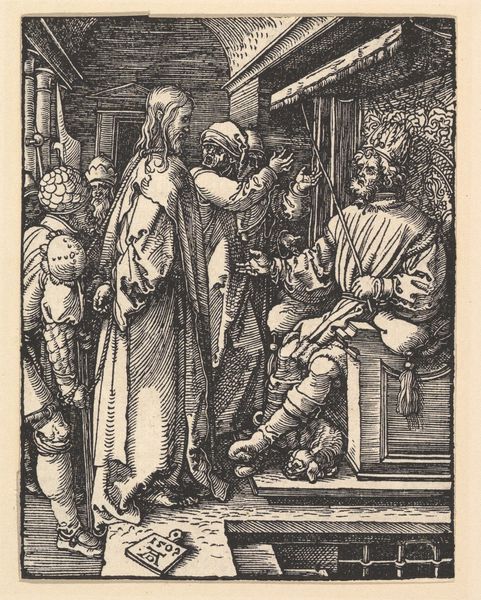
print, woodcut
# print
#
pen illustration
#
figuration
#
11_renaissance
#
woodcut
#
history-painting
#
northern-renaissance
Dimensions: height 300 mm, width 222 mm
Copyright: Rijks Museum: Open Domain
Curator: Welcome. Here we have "The Holy Family with Anna and Joachim" by Albrecht Dürer, a woodcut print made after 1519 and housed here at the Rijksmuseum. The intricate detail he achieves with such a relatively simple medium is just astonishing. Editor: It strikes me immediately as an exercise in contrasts – the delicate, flowing lines of the women’s clothing against the rougher textures defining the men and the setting. Curator: Indeed. Note Dürer's masterful use of hatching and cross-hatching. It is through these precise, repeated cuts into the block that he sculpts volume and suggests light and shadow. Observe, for instance, how he defines the folds of Mary's robes, or the wisps of hair escaping from Anna's headdress. Editor: What fascinates me is the sheer labor involved in such a print. Each line demanded careful planning and precise execution with specialized tools – a knife, chisels. The materiality speaks volumes about the process. Consider the types of wood Durer could have chosen. These decisions would have played a critical role in shaping the work's final form and longevity. Curator: The composition, too, directs our reading of the work. The figures are arranged in a pyramidal structure, echoing classical ideals, grounding them. Yet, the setting, rather spare and somewhat undefined, hints at the burgeoning interest in naturalism. This echoes the dynamism inherent in the Northern Renaissance aesthetic. Editor: The distribution of figures too suggests a societal narrative – the men visually anchor the family. I cannot overlook how printmaking served to democratize images like these. Unlike unique paintings reserved for the elite, woodcuts made religious narratives accessible to a wider populace. Curator: Exactly. Through prints, Dürer expanded the reach of his artistic vision. He played a pivotal role in spreading Renaissance ideas across Europe, engaging with larger theological discussions through accessible imagery. Editor: It makes one think of Durer, a master craftsman, contending with how he shapes and reflects these beliefs and how these shapes eventually become widespread. Curator: In essence, "The Holy Family" exemplifies Dürer's technical virtuosity and his remarkable understanding of how material practice translates into broader cultural significance. Editor: Seeing this has made me want to go home and handle different papers for tactile and visual comparison; consider what each is asking for. Curator: I concur; appreciating how he resolved space and form, understanding that the image itself holds many levels. Thank you for your company.
Comments
No comments
Be the first to comment and join the conversation on the ultimate creative platform.
